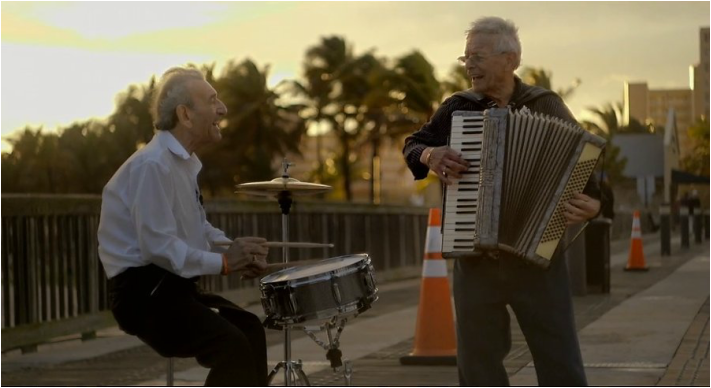 Saul Dreier (on the drums) and Reuwen “Ruby” Sosnowicz (on the accordion) practicing in South Florida. (http://www.thefrisky.com/2015-03-08/two-holocaust-survivors-form-band-in-florida-called-holocaust-survivor-band, accessed 4-21-16). Saul Dreier (on the drums) and Reuwen “Ruby” Sosnowicz (on the accordion) practicing in South Florida. (http://www.thefrisky.com/2015-03-08/two-holocaust-survivors-form-band-in-florida-called-holocaust-survivor-band, accessed 4-21-16). While researching the story about the Dinter family of Brzozowa 9 in Krakow, Poland, featured in my March blog: A Genealogical Journey to 9 Brzozowa Street, Krakow, Poland, I also learned of a surviving family member, a relative of Bina Dreier Dinter. This individual managed to survive World War II, and more recently, has gone on to become a celebrity figure of sorts. The following blog will therefore be a celebration of the life of this man, Saul Dreier, as well as that of his musical partner, Reuwen “Ruby” Sosnowicz. Both men are Holocaust survivors who were liberated around this time of the year, making this an especially apropos point on the calendar at which to relate their story. The close proximity to Passover (or Peysakh, in Yiddish), a holiday celebrating the freedom of Jews from bondage, also played a major role in my decision to write about these two remarkable individuals – who themselves succeeded in escaping a modern-day bondage – 71 years ago. Saul Dreier was born on April 29, 1925 in Krakow, Poland and resided at Celna 9 in an area of Krakow that was quite a distance from Brzozowa 9, where his Dinter family members resided. Saul recalls visiting there on at least one occasion, on a Sabbath day when he was about 11 years old. At the time, the walk seemed to take forever. Saul also remembers climbing the steps inside the building, of which there were – and still are – quite a few. His family, like that of the Dinters, were Belzer Hasidim. What’s more, his grandfather, Berl Dreier – a very religious man – was a cantor in a local Krakow synagogue. Saul’s grandfather, along with other family members, is depicted in the only family photograph that Saul possesses to this day from the prewar era, thanks to an uncle who was already residing in Brooklyn prior to the outbreak of World War II, and gave him the photograph. 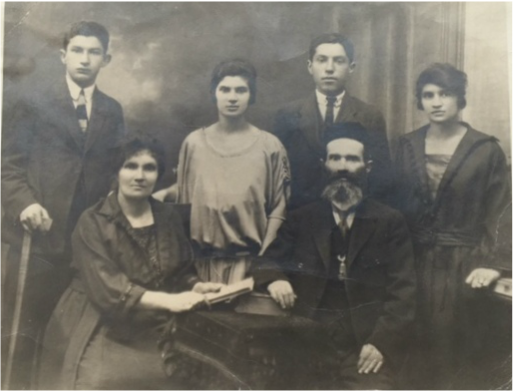 Members of Saul Dreier’s immediate family prior to World War II. Included here is Berl Dreier, the cantor grandfather mentioned in this article (seated, with a beard), as well as Saul’s mother, Fradel Scheindel Dreier (standing, far right). Aside from Saul’s grandfather, who died a natural death, all of the other individuals depicted here were murdered in the Holocaust. (Thanks to Saul Dreier for sending me this photograph and for allowing me the use of it here.) Members of Saul Dreier’s immediate family prior to World War II. Included here is Berl Dreier, the cantor grandfather mentioned in this article (seated, with a beard), as well as Saul’s mother, Fradel Scheindel Dreier (standing, far right). Aside from Saul’s grandfather, who died a natural death, all of the other individuals depicted here were murdered in the Holocaust. (Thanks to Saul Dreier for sending me this photograph and for allowing me the use of it here.) As for Saul’s upbringing, he attended Heder, the religious school attended by boys of a certain age, as well as public school. Although Saul was familiar with Yiddish before World War II, he was already of the generation of young Polish Jews who spoke predominantly Polish. As he told me in my recent telephone conversation with him, it was actually during the war when he learned a great deal more Yiddish, as this was the main language of communication for most incarcerated Polish Jews. According to Saul, even Jews who could speak Polish no longer wished to do so, as they felt much hostility and antipathy toward the Poles, whom they felt had betrayed them to the Germans. When World War II broke out on Sept. 1, 1939, Saul was only 14 years old; according to him, still very much a child. He did not know exactly what was happening around him at the time, but by early March 1941, “the Germans ordered the establishment of a ghetto, to be situated in Podgorze, located in the south of Krakow, rather than in Kazimierz, the traditional Jewish quarter of the city” and the neighborhood in which the Dinter family resided. (United States Holocaust Memorial Museum, accessed 4-12-16). Like thousands of other Jews, Saul and his family found themselves imprisoned in the Krakow ghetto. Ultimately, he was forcibly sent to the nearby Plaszow Concentration Camp, immortalized in Schindler’s List, Steven Spielberg’s award winning film of 1993. Indeed, the filming for this film was actually conducted on location, close to where the former grounds of Plaszow once stood. In the Plaszow Concentration Camp, established in March 1943, Saul was forced to build barracks for incoming Jewish prisoners from all over Poland. In the meantime, a deal was made between German factory-owner and Nazi Party member, Oskar Schindler and Amnon GÖth, the S. S. commandant of the Plaszow Concentration Camp. This agreement permitted Schindler to build a sub-camp in which to house Jews working for his enamel factory, as well as for 2 other factories. According to Saul, this affected approximately 1,000 slave laborers. Saul was assigned to one of these other 2 factories, the N. K. F. (Neue Kühler -und Flugzeugteilefabrik) factory, where he was forced to repair airplane radiators. The entire area in which Saul and these other prisoners labored was carefully guarded by the German S. S. and uniformed Ukrainian volunteers. Much of this story is featured in the aforementioned film, and also discussed in the recently published international bestseller by Jennifer Teege: My Grandfather Would Have Shot Me: A Black Woman Discovers Her Family’s Nazi Past. From his factory, Saul and numerous other slave laborers were forcibly marched, under guard, to Plaszow. From there, they were loaded onto cattle cars headed for Auschwitz. However, upon arrival in Auschwitz, the Germans shipped Saul westward to the Mauthausen Concentration Camp, in Austria. Initially, he was incarcerated at Mauthausen. Later on, though, he was sent to a sub-camp in Linz, Austria, approximately 20 kilometers from the concentration camp, where he was again forced to do slave labor in a factory. Saul remained in Linz until the end of the war, at which point he was liberated in early May of 1945 by the 11th Armored Division of the U. S. Army. 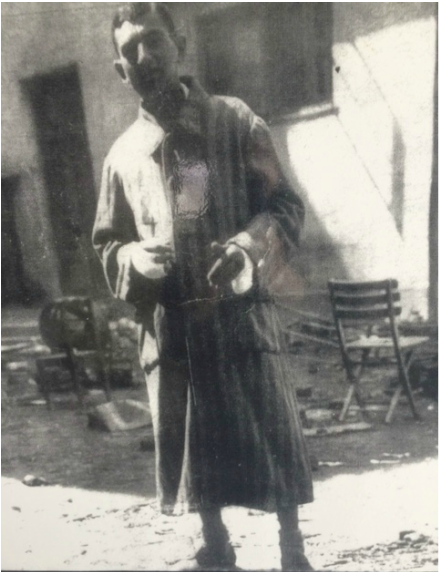 Saul Dreier shortly after liberation and following surgery on his hands, early May of 1945. (Thanks to Saul Dreier for sending me this photograph and for allowing me the use of it here.) Saul Dreier shortly after liberation and following surgery on his hands, early May of 1945. (Thanks to Saul Dreier for sending me this photograph and for allowing me the use of it here.) Saul related to me that shortly after liberation, he was aided by an American soldier – a Jewish medic from Manhattan with whom Saul conversed in Yiddish – as it was the common language for both men. At the time, Saul had gangrene in his hands, which he incurred when he and other prisoners were struck by a bomb. The U. S. officer whisked him off on his jeep to the nearest hospital, where he received immediate medical treatment and was operated on right away. A photo was taken of Saul only a day or so after this operation, which may be viewed here. Sometime thereafter, Saul was taken overnight by the Jewish Brigade southward into Italy. He ended up in a D. P. (Displaced Persons) camp in Santa Maria di Bagni (today, Santa Maria al Bagno), located at the heel of the country, where he remained for 5 years. It was there that Saul learned to speak Italian and to play the drums. The music lessons would prove especially useful to him years later, when he would decide to establish his musical band. But more about that in a moment. Saul was the sole survivor of his immediate family. However, in 2010, after 65 years of searching, the Red Cross helped reunite him with his cousin, Lucy Weinberg, who was a survivor of Schindler’s group of factory workers, and who had subsequently settled in Montreal. Their amazing story is featured here. Ultimately, Saul settled in the United States, where he met and married his wife, Clara, also a Holocaust survivor, in 1957. The two went on to have 4 children and 6 grandchildren together. Sadly, Clara passed away on February 16, 2016. For many years, Saul lived in Elizabeth, New Jersey, where he worked in the real-estate sector, and retired close to 20 years ago. He now resides in South Florida. In the spring of 2014, Saul was inspired to start a musical band, which he named the “Holocaust Survivor Band,” feeling that this would help bring greater meaning and enjoyment to his later years. His major source of inspiration was an article he read about “the death of Alice Herz-Sommer, a 110-year-old survivor and accomplished pianist who’d survived a concentration camp by playing music.” Through word of mouth, Saul met another musically talented Holocaust survivor named Reuwen “Ruby” Sosnowicz, who played the keyboard, the accordion, and various other instruments. At the time, Saul was 89 and Ruby was 85. Saul convinced the former hairdresser, photographer, and professional musician to join him in his new venture, and the two have been performing together ever since. Ruby Sosnowicz is a native of Warsaw, Poland, born into a large and musical family. During World War II, he was incarcerated with his family in the Warsaw ghetto, from which he managed to flee. He escaped death by hiding in the barn of a sympathetic Polish farmer, who would bring him food whenever he went out to feed the horses. (Huffington Post, accessed 4-12-16). Like Saul, Ruby was married to his wife, Regina, for over 50 years. Ironically, she passed away very recently, within days of Saul’s wife. Both women, unfortunately, were ill for a number of years. Along with the accompaniment of band members, Chanarose Sosnowicz – Ruby’s daughter – Jeff Black, a British-born rhythm guitar player, and Mark Horowitz, a saxophone player, the two men feature a wide array of music, including Yiddish Klezmer, Hasidic Nigunim, Tango, Rumba, and Hebrew, Polish, and Russian songs, among others. According to Saul, he and Ruby can “play everything” – whatever the listeners want to hear. Two years after the initiation of their band, Saul and Ruby have been featured in the articles of several publications and on various media sites, including: the Huffington Post, JP Newsroom, the New York Times, Tablet Magazine, CBC Radio, and YouTube. They have already played at many points on the map of North America, including: Brooklyn, Cleveland, Detroit, Hamilton, Ontario, Las Vegas, Reading, Pennsylvania, and South Miami. On occasion, they have even been accompanied at some of these venues by the likes of world-renowned Yiddish singers, such as Dudu Fisher and Lipa Schmeltzer. Presently, Saul and Ruby have their hearts set on performing overseas in Poland and Israel, where they have been invited to perform, as well as in Germany. Their dream is to return to the country of their childhood and to perform outside of the Auschwitz Concentration Camp, where so many of their loved ones perished. This is an opportunity to help these two Holocaust survivors realize a dream and do a great mitzvah [or mitsve; a good deed] – to play their music, celebrating their survival, at the gates of Auschwitz. Even the smallest contribution would be valued and make a difference. Saul and Ruby need $8,000 to make their dream come true. Right now, they only have $500. Anyone who would like to be part of this mitzvah can visit: https://www.gofundme.com/yphjjxdg.
9 Comments
Brenda Ajzenkopf
4/26/2016 06:42:42 am
Hello Rivka,
Reply
4/26/2016 07:14:53 am
Hello Brenda,
Reply
Susan Landgarten-Katz
5/1/2016 05:39:08 am
I also had the pleasure and honour of attending a performance of the Holocaust Survivors Band when they came to Hamilton, Ontario. In addition to being in awe of these amazing men and their spectacular performance (not to mention their energy!), the evening held special meaning for me. My father and his family had lived in Kraków and at the age of 19 was also taken to the Plaszow concentration camp. I had the opportunity after the concert to ask Saul if he might have know my father or his family and even though he did not, I still felt a special connection. This was one evening that I will never forget.
Reply
5/1/2016 07:20:50 am
Thank you very much, Susan, for writing in and sharing your impressions of these two wonderful performers and their musical band! I think they should be an inspiration for all of us.
Reply
Steven
5/3/2016 09:39:55 am
I too had the pleasure of attending the band's performance at the Kennedy Center in Washington, DC, several months. The band was fantastic! The band played non-stop for one hour with songs in English, Yiddish, Hebrew, French and Italian and the audience loved it all! On the shuttle bus from the Kennedy Center to the Metro Station, Saul's and Ruby's energy was the central part of the conversation among the riders. I hope that the band will be able to raise the funds in order to travel to Poland, Germany and Israel. Saul & Ruby: Keep up the good work.
Reply
5/3/2016 01:19:31 pm
Hi Steven,
Reply
Peter Kubicek
1/23/2017 08:08:57 am
Rivka, Thank you for this moving story of survival. Every Holocaust survivor has his own story. I consider it my duty to share my story of survival as long as I am around, even though I am now 87 years old. I have given presentations in various synagogues; I have given a presentation at The National Czech and Slovak Library and Museum in Cedar Rapids,IA. Since this event was well publicized in advance, I had an overflow audience. I don't know whether any of these Iowans have ever met a Jew, but they definitely never met a Holocaust survivor..
Reply
claire london
11/22/2017 07:45:57 pm
As a Child of survivors I would be honored to go to one of your concerts. Could you tell us when you will be performing again and where.
Reply
11/22/2017 08:25:00 pm
Hi Claire,
Reply
Your comment will be posted after it is approved.
Leave a Reply. |
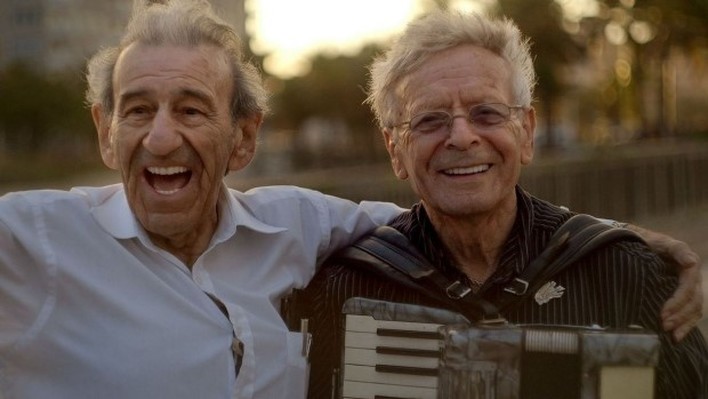
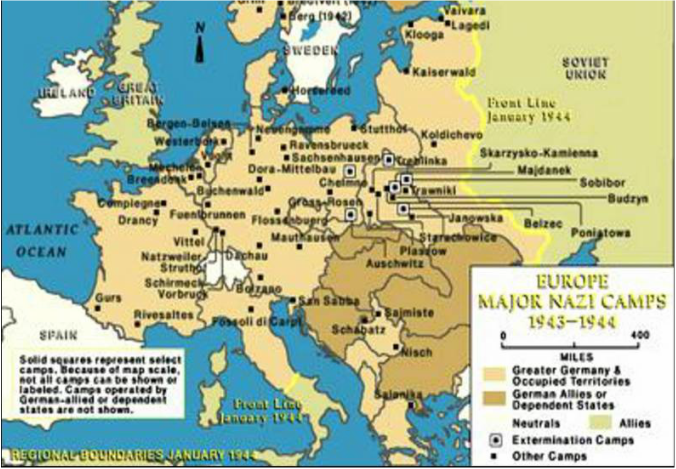
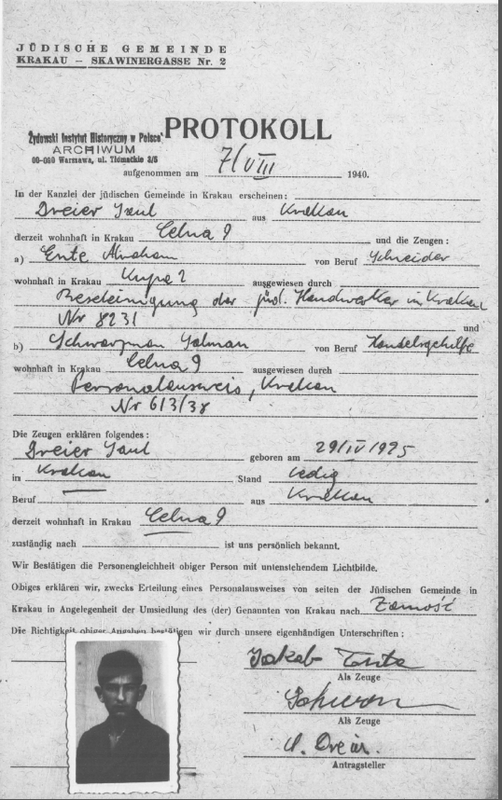
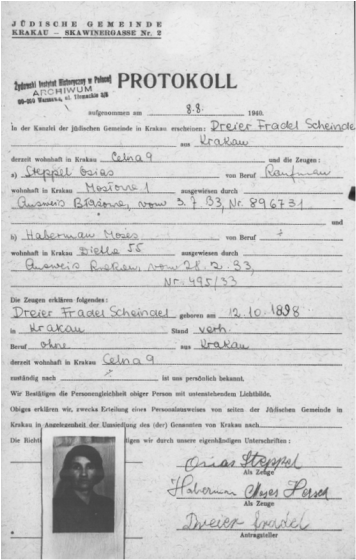
 RSS Feed
RSS Feed